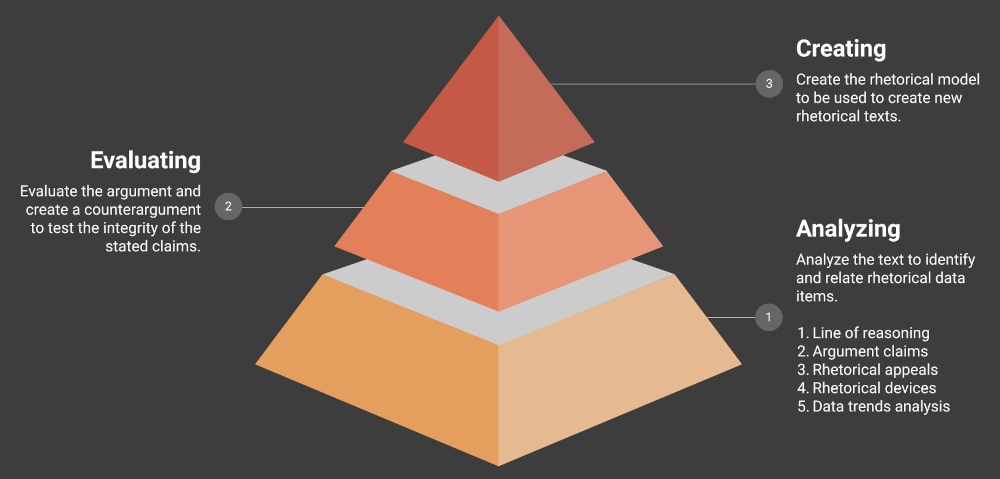Table of Contents
What is a Rhetorical Speech Modeling
Rhetorical Speech Modeling: a rhetorical modeling process that provides sequential steps to perform a rhetorical speech analysis through data analysis. The process extracts a model that identifies the placement, frequency, and combination of multiple rhetorical concepts (appeals, devices, etc.) for maximum rhetorical effect. This derived rhetorical speech model can then be used for future, original speeches.
Example: The user needs to write and present a speech for class president.
- The user selects a presidential speech by President Obama to analyze.
- The user performs the required speech analysis/data analysis steps to extract the model.
- Finally, the user uses the derived model to create their own modeled but original speech.
What is the Rhetorical Speech Modeling Process
The Rhetorical Speech Modeling process leverages the three higher order thinking skills within Bloom’s Taxonomy – Cognitive Domain: Analyzing, Evaluating, and Creating.
- Step 1: Analyze the speech to:
- perform the following data analysis steps to determine the placement, frequency, and combination of rhetorical data:
- line of reasoning
- argument map – identifies the rhetorical structure of the speech
- argument claims
- fact claim
- policy claim
- value claim
- rhetorical appeals
- appeal to ethos
- appeal to logos
- appeal to pathos
- rhetorical devices
- data trends analysis
- line of reasoning
- perform the following data analysis steps to determine the placement, frequency, and combination of rhetorical data:
- Step 2: Evaluate the text to test the integrity of the rhetorical structure:
- invent a counterargument in the argument map
- invent alternate rhetorical choices
- Step 3: Create the rhetorical model to be used to create new speeches

Rhetorical Speech Modeling Learning Series
I’ll be creating a series of posts to explore this process. I’ll also be including free quizzes to help test your knowledge of the specific rhetorical concept that we’re covering. Here’s a list of the current completed and in progress rhetorical speech analysis posts:
